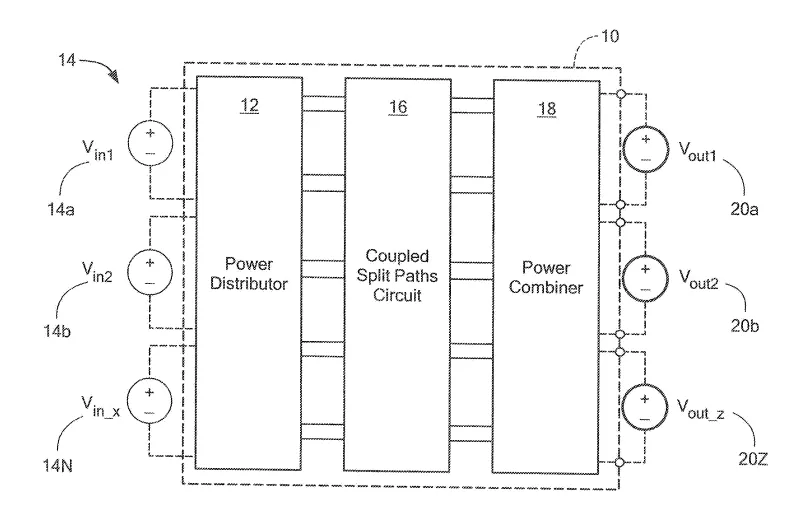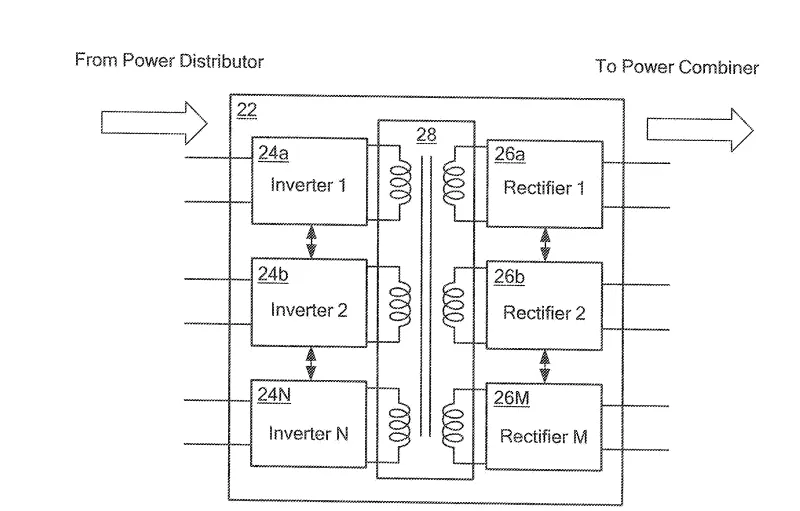Coupled Split Path Power Conversion Architecture
Power converters are used for direct current (DC) distribution systems, computers, telecommunications, data centers, transportation, lighting, displays, and medical applications that require high power density and quick response.
Researchers
-
coupled split path power conversion architecture
United States of America | Granted | 10,644,503
Figures
Technology
The invented power converter includes a coupled split path (CSP) power conversion circuit and a power distributor circuit. The CSP power conversion circuit includes inverter cells, a transformer and rectifier cells, and is connected to the power distributor circuit to split power provided from one or more sources into multiple voltage domains. By splitting the power into the multiple voltage domains with use of the invented structure, the impact of parasitic losses in circuit operation is reduced and the operation range of each voltage domain is compressed.
Problem Addressed
Traditional magnetic converters such as forward converters or flyback converters are generally simple, low-cost and easy to control. However, there is a continued trend to operate power converters at ever increasing switching frequencies. As switching frequencies increase, the converter timing becomes difficult to satisfy, and parasitic losses become significant. Furthermore, it becomes more challenging for designs of the power converter systems due to requirements for achieving high performance in efficiency, power density, ac line synchronization, total harmonic distortion (THD) or power factor, over a wide operating range of universal line input voltages.
Advantages
- Efficiency over an operating voltage range which is wider than that of prior
- Reduced inductor size
- Reduced parasitics at high frequency
License this technology
Interested in this technology? Connect with our experienced licensing team to initiate the process.
Sign up for technology updates
Sign up now to receive the latest updates on cutting-edge technologies and innovations.

